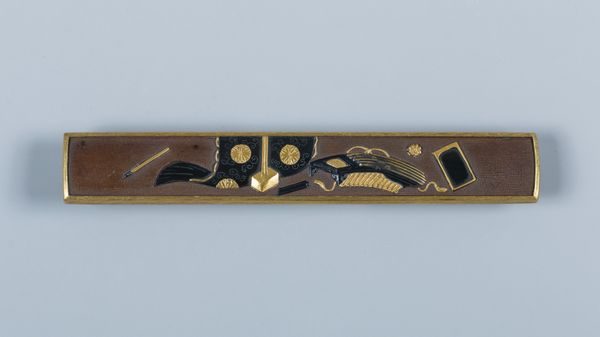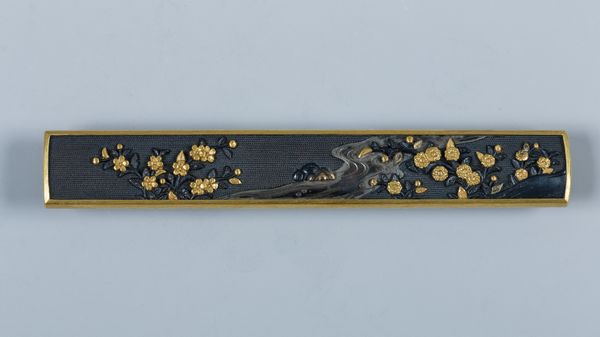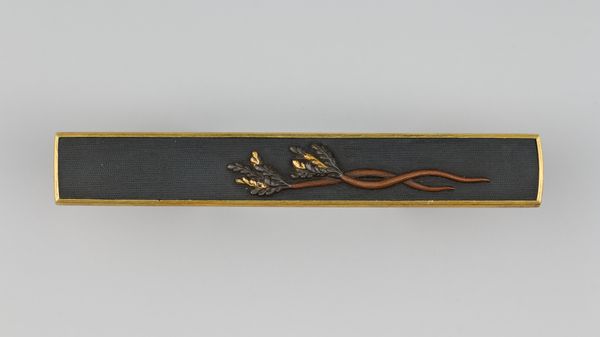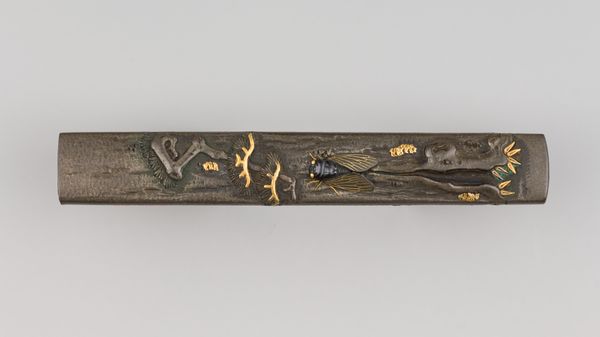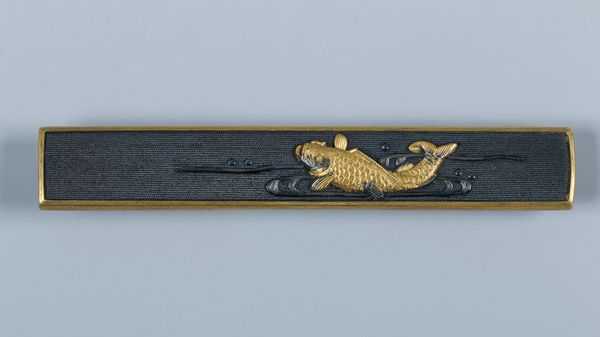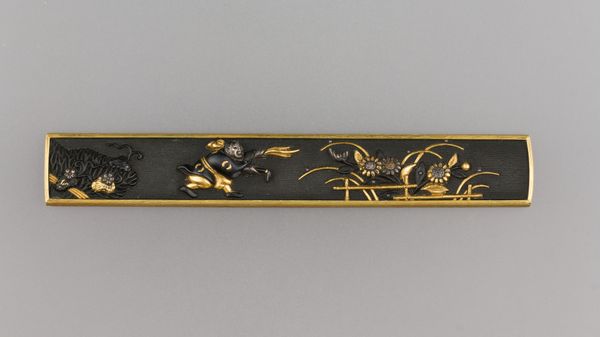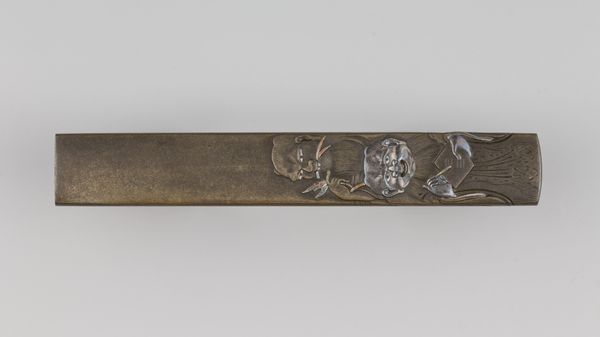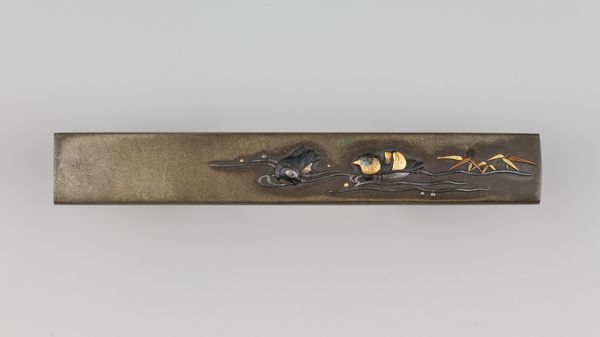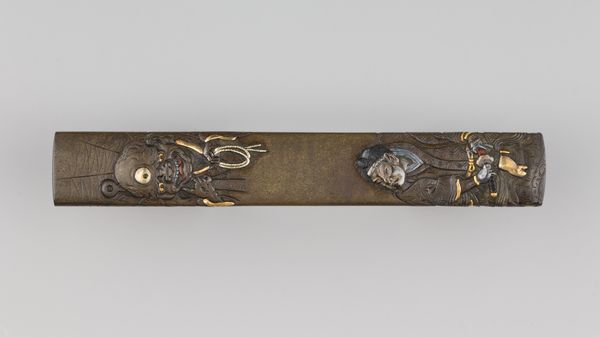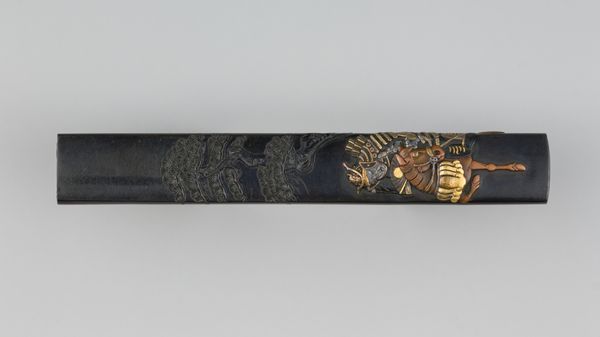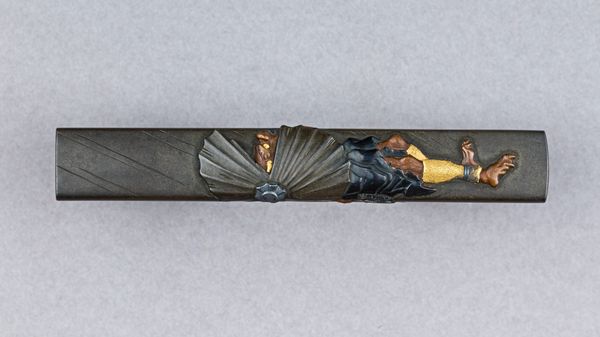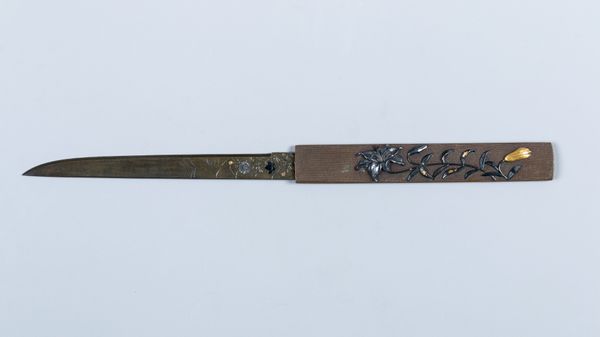
#
clear graphic shape
#
3d sculpting
#
3d image
#
3d printed part
#
plastic material rendering
#
furniture
#
virtual 3d design
#
japan
#
sculptural image
#
unrealistic statue
#
3d shape
#
framed image
#
armor
#
sword
#
arm
Dimensions: L. 3 13/16 in. (9.7 cm); W. 9/16 in. (1.4 cm)
Copyright: Public Domain
Curator: It strikes me as a very compressed battlefield drama, everyone squeezed together, jostling for space on this small rectangle. Editor: Precisely. We’re looking at a "Kozuka," or knife handle, created by Gotō Eijō sometime between 1550 and 1650. These small, often ornate, handles adorned the utility knives carried by samurai. Considering that time frame, imagine the artisan and the warrior, each in their sphere. Curator: It's compelling how these figures almost become abstract shapes. What at first seems chaotic begins to coalesce into distinct forms once you look closer—each a little warrior engaged in the act of war, armor gleaming, weapons raised. The dark background throws them into stark relief. Editor: Notice the selection of metal. The interplay of gold, silver, and perhaps a darkened copper or bronze... these choices wouldn’t just have been aesthetic. They spoke to value, status. And then think of the intensive labor. This wasn't a single material forged into shape, but various inlays carefully hammered, polished... a micro-engineering project. Curator: Agreed. And in that precision, a deeper symbolic meaning emerges. Beyond the representation of battle, consider the virtues the samurai class would ascribe to such meticulous craft. It mirrors discipline, honor, and commitment—qualities they sought to embody. The Kozuka is not just decorative; it's a portable reminder. Editor: Indeed. I'm particularly curious about how wear and tear affected the meaning and experience of using it over time. A scratch, a slight discolouration… Did this then change the owner's understanding of its martial symbolism? Did it become almost a talisman, infused with specific, hard-won victories, maybe even defeat? Curator: It also offers insight into the artistry valued within that society, these miniature narratives speak volumes about their reverence for craftsmanship. The fact these Kozuka handles often outlast the blades themselves makes you wonder how those changing relations over time affected our view on craft itself, not necessarily fine arts as one may see. Editor: Food for thought, really. It takes art and craft to make an item of daily use for the noble class that then echoes throughout time in museum spaces as items for aesthetic evaluation. I see this "Kozuka" is then also the mark of shifting hands—artist, warrior, and us. Curator: An echo of craftsmanship resonating through history, transforming battle into a testament of skill and a reflection of social values—quite striking. Editor: Exactly. Next time, let's see if we can unravel another such story of making.
Comments
No comments
Be the first to comment and join the conversation on the ultimate creative platform.
